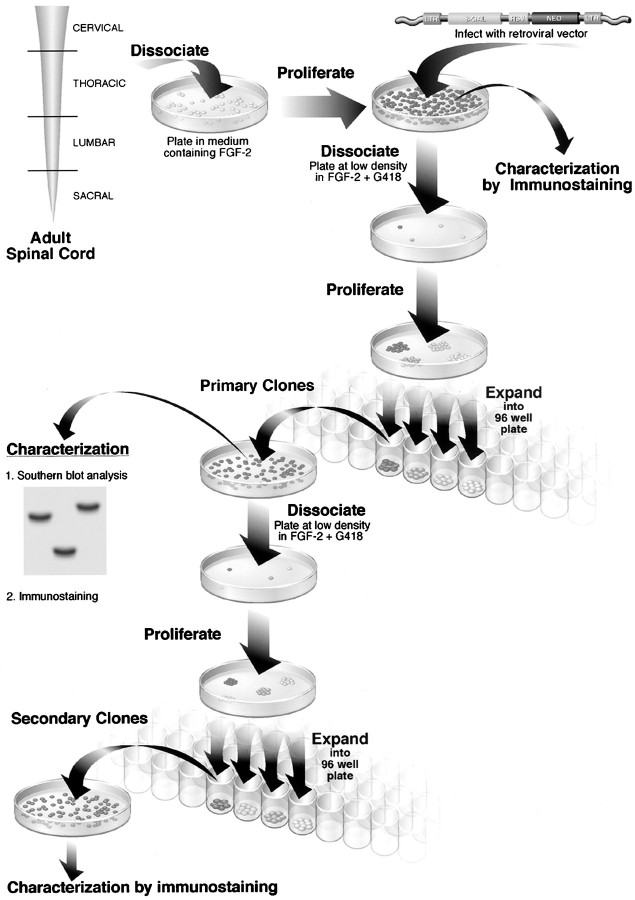Fig. 1.
Schematic representation of the method used to assess multipotency and self-renewal of FGF-2-responsive, adult-derived spinal cord cells. For cloning, progenitor cells in vitro were labeled with a retroviral marker, and Southern blot analysis was used to show that a cluster of proliferating cells (primary clone) originating from a single cell can generate multiple cell types, including neurons, astrocytes, and oligodendrocytes. For subcloning, primary clones were dissociated and replated as single cells under clonal conditions in FGF-2-containing medium; a subset of cells proliferated to give rise to secondary clones. Secondary clones were also able to generate neurons, astrocytes, and oligodendrocytes. Subcloning analysis demonstrates the capacity of a cell to generate progeny similar to itself (i.e., self-renewal). These experiments demonstrate the presence of multipotent progenitor cells in adult rat spinal cord that proliferate in the presence of FGF-2 and are capable of self-renewal. β-GAL, β-Galactosidase;LTR, long terminal repeat; RSV, Rous sarcoma virus.

